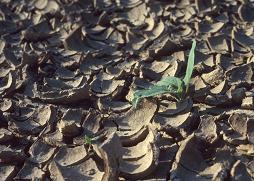 > English > Climate Encyclopaedia > Food and Climate > more > 1. Past and present > - history
> English > Climate Encyclopaedia > Food and Climate > more > 1. Past and present > - history
|
|
Effect of major historical climate events on food productionChanges to our climate can have severe impacts on society.
|
|
As well as being their staple diet, people also used potatoes to pay their rent to their landlords. Landlords evicted hundreds of thousands of people from their homes and many of these people emigrated to America and other English-speaking countries. People who ate the rotten produce became ill and entire villages were infected with cholera and typhus. Many of the people who emigrated died on the crowded ships. Around one million people died during the Irish Potato Famine of 1846-1850 from hunger and disease. The famine profoundly changed the social and cultural structures of Ireland, Britain, and the United States of America.
|
The 1943 Famine in BengalAlmost 100 years after the potato famine in Ireland another fungus, Helminthosporium oryzae, caused famine in British ruled Bengal (now part of Northeast India and Bangladesh). This fungus causes brown spot in rice. In 1942-1943 weather conditions were exactly right to encourage an epidemic of the disease and the fungus caused almost complete destruction of the rice crop. Malnutrition and starvation resulted in the death of over two million people. Severe food shortages were not only the result of fungal infestation of rice crops but also the ending of rice imports from Burma following the Japanese occupation of the country. Many economic factors also contributed to the Bengal famine. The economy was undergoing wartime inflation. Farmers and rural people were at a disadvantage because they made most of their money at harvest time, before rice prices began to soar. Since their wages did not increase as rice prices increased, they were less able to purchase food.
|
Recent events in USAExtreme weather events happen in every agricultural region of the US and occur somewhere in the country almost yearly. Over the past three decades, significant decreases in crop production as a result of unfavourable or extreme climate events have occurred in the United States of America. Droughts were most common during the early part of the period, with floods dominating in the 1990's. The most severe weather related events for US agriculture were a drought event in 1988 and a large flood in 1993. Because the US is highly developed and its agricultural industry is highly diversified, the government has been able to prevent great human suffering as a result of these extreme weather events.
|
|
The drought of 1988The severe drought which occurred in 1988 in the U.S. Midwest started early in the spring, continued throughout most of the summer and was accompanied by higher than average temperatures. It spread to the Central and Southeastern parts of the nation and affected agriculture, water resources, transportation, tourism, and the environment. Crop yields dropped by approximately 37% and required a $3-billion bailout by Congress to affected farmers.
|
|
Crop pests increased as well, resulting in spotted spider mite (T. urticae) infestations of soyabeans throughout the entire Midwest region. The damage occurred during the critical growth stages and an estimated 3.2 million hectares were sprayed with insecticides to control the mites across the region. Losses to Ohio farmers were estimated to be between $15 and 20 million. The drought conditions led to decreased river flows in the Ohio River and the lower half of the Mississippi River by the end of May. Mid-summer barge movements were restricted on the major rivers that drain the central U.S. The depth of the river near Cairo, Illinois fell to less than 8 feet in mid-June. The reduced river flows caused a decrease of 25% in hydroelectric power generation and a decrease of 15% in the recreational use of rivers and lakes. Salty water from the Gulf of Mexico, reached 105 miles up the Mississippi River all the way past New Orleans.
|
The Flood of 1993Flooding in the summer months of 1993 affected 16,000 square miles of farmland in the US, with Nebraska, Iowa, and Michigan hardest hit. Over 11 million acres of crops were damaged. Losses were estimated to be over $3 billion and emergency measures cost over $222 million.
|
|
|



